Many of the November pioneers came from the south-west of Victoria from Bridgewater to Timboon. Somewhere in between is Koroit and four of the pioneers who resided there, all of Irish descent.
Samuel LORD: Died 18 November 1906 at Pombeneit. Samuel Lord was a resident of Pomberneit for forty-one years, but it took him the twenty years prior to settle. Samuel, born in Devonshire, England. arrived in Adelaide in 1845, went to Sydney, then back to Adelaide and in 1849 returned to England for a visit. He then came back to Australia, heading to the goldfields for several years. He then selected land at Pomberneit in 1865. He was a member of the Heytesbury Shire Council and had nine children.
Johanna RYAN: Died 27 November 1914 at Panmure. Johanna Ryan and her husband Mr T. Lowrey and a child, left Tipperary, Ireland in 1851 for Australia, specifically Hobsons Bay, Victoria. After a time at the Bendigo goldfields, the Lowreys bought land at Kirkstall. Following the Land Selection Act of 1865, the Lowreys selected at the Yallock Estate and turned bush into a “beautiful farm” Johanna was ninety years of age at the time of her death.
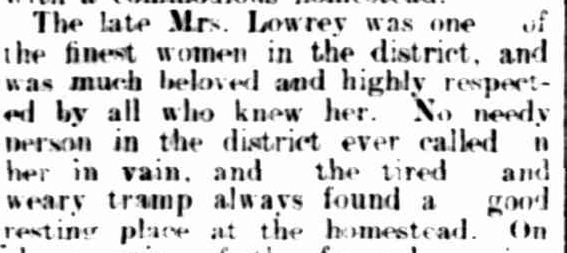
GARVOC. (1914, December 5). Warrnambool Standard (Vic. : 1914 – 1918), p. 6 Edition: DAILY.. Retrieved November 22, 2012, from http://nla.gov.au/nla.news-article73556791
Daniel O’CONNELL: Died 5 November 1916 at Koroit. It was a lonely end for Daniel O’Connell. He lived in a hut near the Koroit racecourse and received the old-age pension. In his earlier years, he had worked as a groom and roustabout. Daniel’s body was found in his hut after a kindly neighbour, Miss Mullens, noticed he seemed unwell and couldn’t hear her. She rang the police who visited the hut and found his body. He was well in excess of eighty years, according to locals, and he had lived in the district for around sixty years.
Johanna CLEARY: Died 16 November 1916 at Chocolyn. Johanna arrived in Port Fairy from Ireland when she was sixteen, around 1845. She married John Moloney and they raised six sons and one daughter. The Moloneys also resided at Koroit, but when John died, Johanna went to live with her son James at Chocolyn.
Hugh McDONALD: Died 17 November 1917 at Ararat. Hugh McDonald was another Ararat resident, like those in October Passing of the Pioneers, who did the goldrush circuit. Arriving from Scotland in 1854 aboard the ship Tasmania, he travelled to most of the goldfields in Victoria as well as a stint in New Zealand, but like those October pioneers, it was Ararat that he returned to. His travels must have brought some success as he selected land at Mt. Ararat and built up what became known as the Mt. Ararat Estate (a winery today). He married and had five children. He was buried at the Moyston cemetery.
George CAMPBELL: Died November 1918 at Portland.
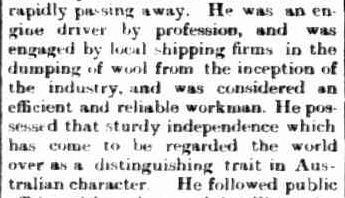
(1918, November 25). Portland Observer and Normanby Advertiser (Vic. : 1914 – 1918), p. 2 Edition: MORNING. Retrieved November 23, 2012, from http://nla.gov.au/nla.news-article88197935
Catherine MITCHELL: Died 6 November 1918 at Yambuk. Catherine Mitchell arrived in Port Fairy in 1852 aboard the Priam. She married Richard Thomas of Yambuk and they had four sons, two daughters, forty-five grandchildren and thirty-seven great-grandchildren at the time of her death. She lived to ninety-two years of age.
James BLACK: Died 17 November 1918 at Koroit. James met an unfortunate death at age seventy-six. Despite bad health, he was turning out cows when a bull rushed him and knocked him to the ground. He never recovered and died four days later. James was born in Paisley, Scotland and had been a Koroit butcher for over forty years. He was also Mayor of Koroit on several occasions.
Maria MOLONEY: – Died 24 November 1918 at Koroit. Maria Moloney’s obituary described her as a “good old sort”. She had been a resident of Koroit for 60 years after arriving from Ireland with her father and brother in 1852 at the age of 15. Her son Richard was killed at war in 1916 and Maria’s health began to fail after hearing the sad news. She was buried at Tower Hill cemetery.
Sarah Ann OLIVER: Died 15 November 1928 at Brisbane, Queensland. Sarah Ann Oliver was an older sister of Elizabeth and Mary Oliver, wives of Reuben Harman and Jonathon Harman. Like her two sisters, she was born in Cornwall and immigrated in 1849 aboard the Courier into Port Phillip. Ten years later she married Edmund Dalton, an Irishman and they lived in Port Fairy for the following twenty years, raising eight children. In 1879, Sarah and Edmund moved to the Darling Downs, Queensland.
Thomas MAILON: Died 10 November 1930 at Portland. Thomas Mailon was born in Portland and was a policeman during his working years. He lived in what was known locally as the “White House”, a home set on the sandhills near Portland. An advertisement in the Portland Guardian (below) lists the “White House” for sale. This was only nine months before his death. Thomas had a number of brothers and sisters but never married.
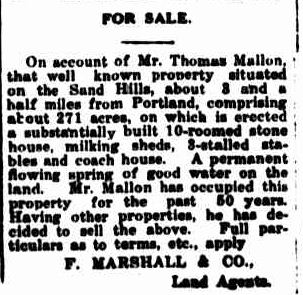
Advertising. (1930, February 10). Portland Guardian (Vic. : 1876 – 1953), p. 3 Edition: EVENING. Retrieved November 26, 2012, from http://nla.gov.au/nla.news-article64291549
Marion Nunn JONES: Died 11 November 1936 at Bridgewater. Marion Jones was born at the Tasmanian Hotel in Portland around 1851. She married William Forward Hedditch at Lal Lal, the Hedditch family home at Cape Bridgewater. Forty-six years later, Marion died in the same room as she was married. Her mother-in-law, Rachel Read was a January Passing Pioneer.
Janet Isabella Mary BLACK: Died 10 November 1941 at Mt. Gambier. Janet Black was born at Bridgewater in October 1863. She was the only daughter of Joshua Black and Janet Nicol and stepsister to Rachel Black whose obituary was in the October Passing of the Pioneers. Janet married Samuel Kenney and they had one daughter, Lexie. They lived at both Cape Bridgewater and Kongorong. Janet was the last surviving child of Joshua Black.
Mary KENNEY: Died 19 November 1941 at St. Kilda. Mary Kenney was a sister-in-law of Janet Black (above) and they passed away within nine days of each other. Mary was the daughter of John and Ellen Kenney of Lower Cape Bridgewater and she was born in Richmond Street, Portland in 1847. She later married J.K. Palmer of Hawkesdale.
Margaret Bennett MARTIN: Died 12 November 1942 at Portland. Margaret Martin lived in Portland for the entire eighty-five years of her life. She married Mr Symington and they had two sons and three daughters.
Florence COUCH: Died 17 November 1954 at Surrey Hills. Florence Couch’s father was one of the original pioneers of the Scott’s Creek district near Timboon. Florence was the last surviving member of a family of thirteen. The Couch family were well-known for their horse handling skills. When Florence married Mr Roberts around 1906, they moved to South Africa for two years before returning to Scott’s Creek. She had five surviving children at the time of her death.



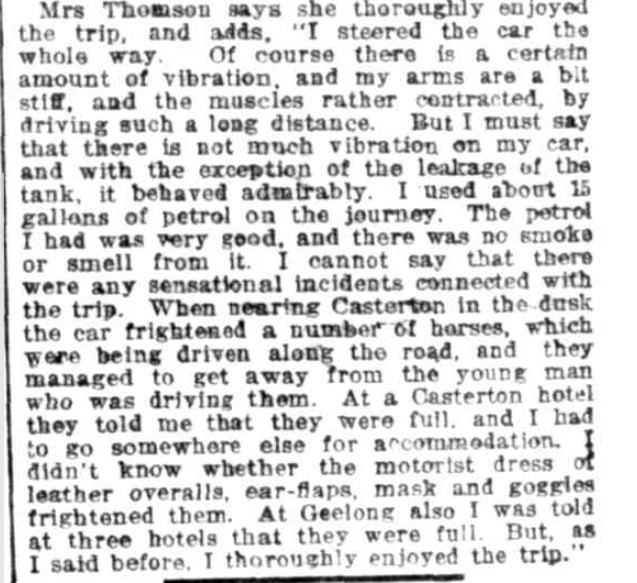






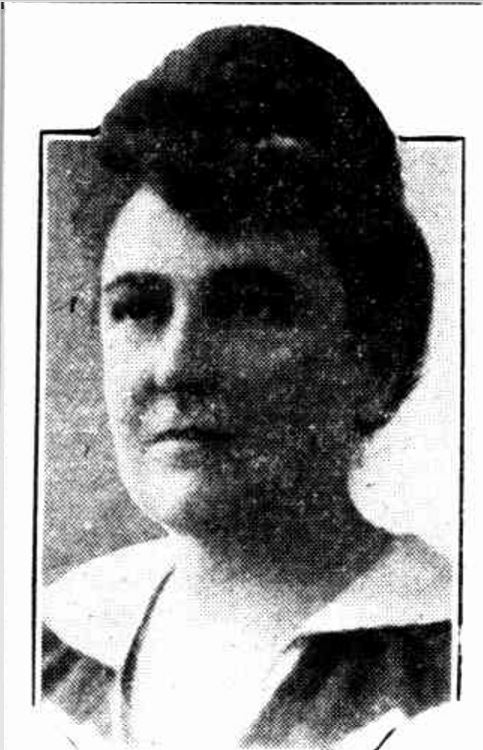
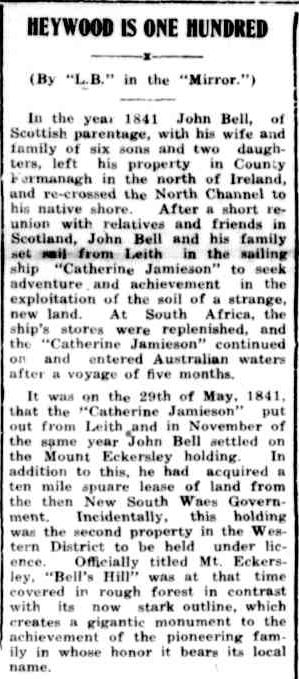
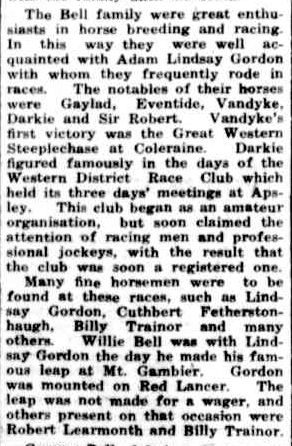


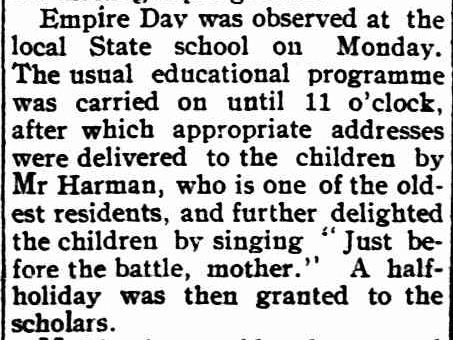
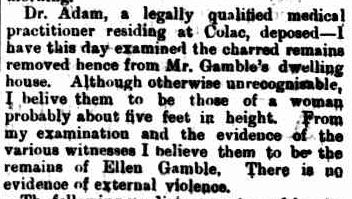
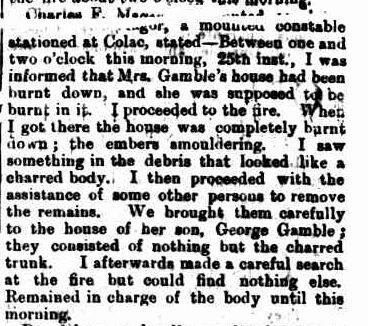
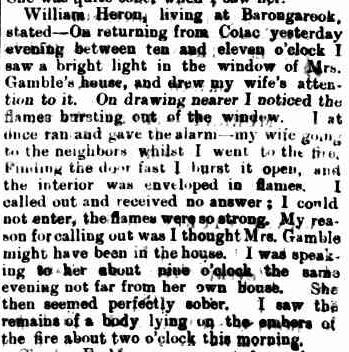
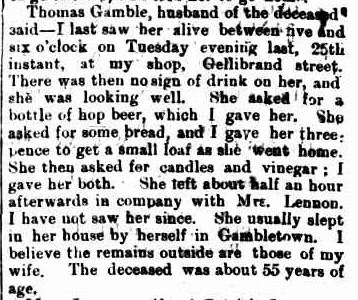
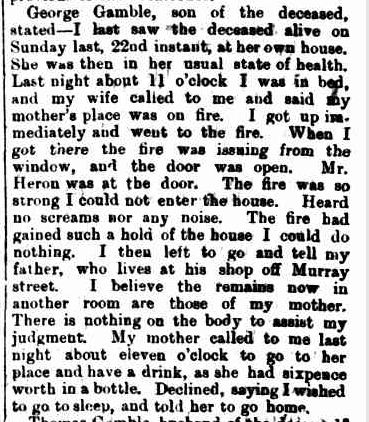
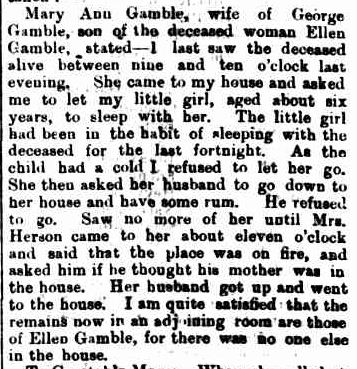
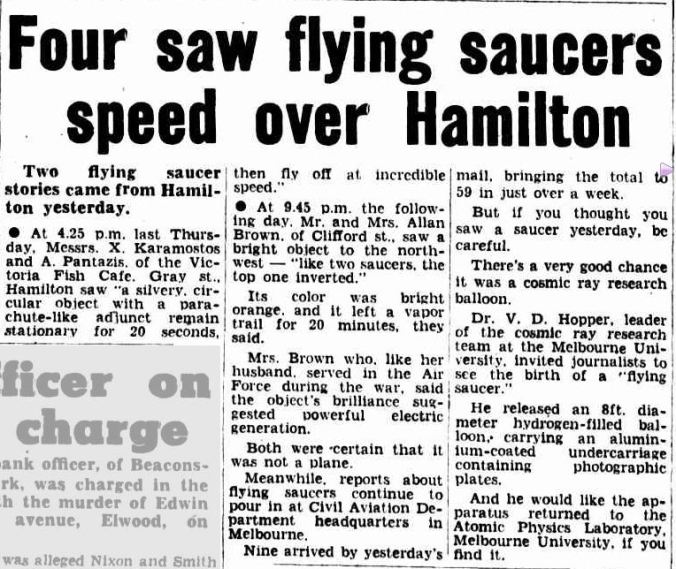



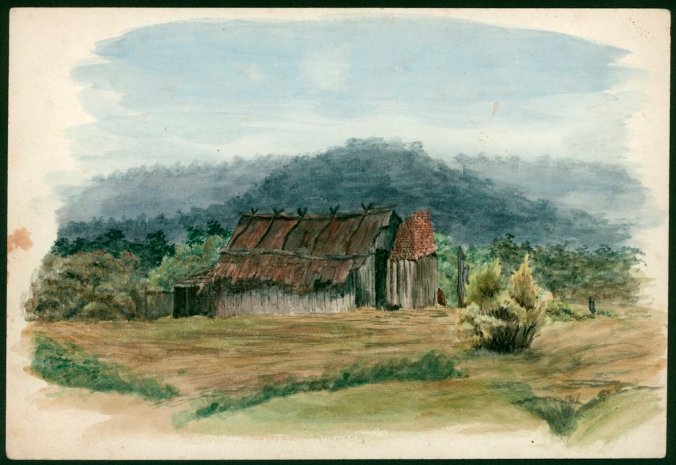
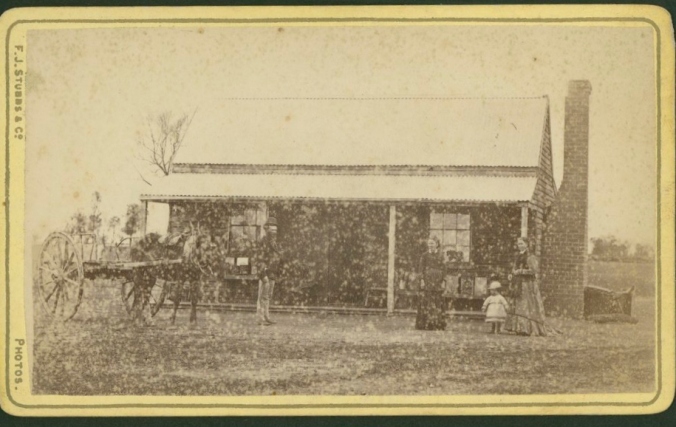


















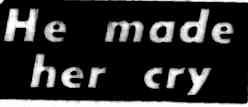
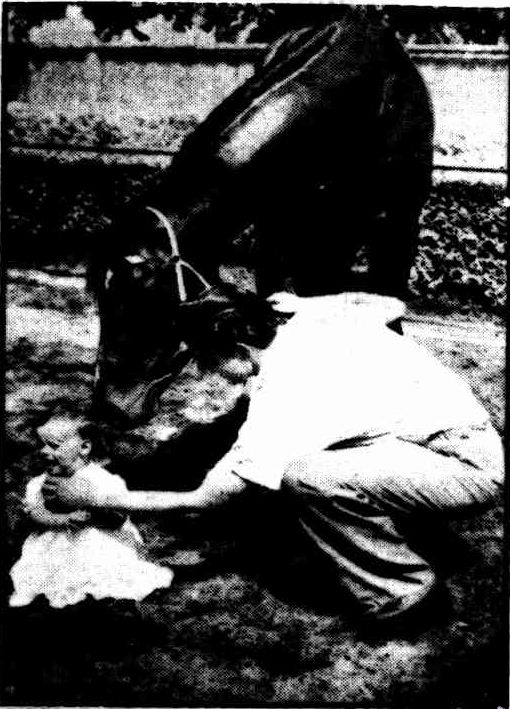

You must be logged in to post a comment.